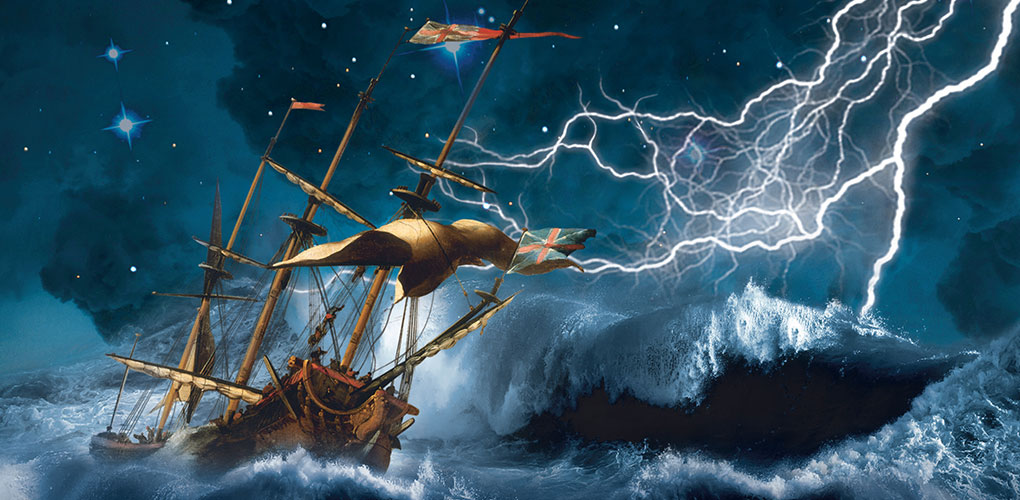
The problem of longitude – how to determine your location in an east-west direction at sea – plagued sea travel for centuries. The lack of reliable methods to determine it led to dangerous, long and costly voyages. The loss of cargo, ships and lives was high and demanded an immediate solution.
Ships, Clocks & Stars: The Quest for Longitude commemorates the 300th anniversary of the Longitude Act of 1714. The Act lead to the greatest scientific breakthrough in maritime history: the ability to determine a ship’s position at sea. This discovery brought together two solutions to calculate longitude: developing accurate timekeepers for seafaring and tracking the movement of celestial bodies.
This exhibition marks the first time many of these historical artefacts have been in Australia, including an engraving of the Longitude Act from the 1700s, stunning replicas of John Harrison’s famous timekeepers H1, H2 and H3, Harrison’s original H4 sea watch, and many other exquisite timepieces dating to the 1600s and 1700s. Additional objects of note include Jacob Aertsz Colom’s celestial globe from the 1600s, original paintings of John Hadley, Galileo Galilei and Captain James Cook, and early navigational instruments.
Developed by the Royal Museums Greenwich, Ships, Clocks & Stars charts the race to develop a reliable method to determine longitude at sea. From wacky ideas to fierce rivalries, the quest for longitude was fought on a battlefield of science drenched with political intrigue.
John Harrison is considered the hero in the race to accurately measure longitude. Ships, Clocks & Stars presents the exquisite Harrison timekeeper replicas against the backdrop of unprecedented investment and collaboration between politics, scientists and seafarers vying for the longitude prize. Astronomer Royal Nevil Maskelyne’s observations at the Royal Observatory in Greenwich, his work on the Nautical Almanac and participation in the Board of Longitude demonstrate the complementary nature of astronomical and timekeeper methods of determining longitude.
Other historical characters featured in the exhibition include Galileo, Isaac Newtown, James Cook and William Bligh. Each added a layer of complexity to the multifaceted quest for longitude.
The exploration and mapping of Australia also features in the story of longtidue. There are artefacts from the Vergulde Draeck, a Dutch merchant vessel bound from South Africa to Batavia (modern-day Jakarta, Indonesia) that was shipwrecked off Western Australia in April 1656 as well as a number of objects are associated with Capt. William Bligh, who survived a 47-day, 6,701-kilometre open-boat voyage after being cast adrift by the Bounty mutineers. Cook’s second and third voyages of discovery are retold with the timekeepers K1 and K3 (made by Larcum Kendall), a sextant, and a ‘dip circle’ (a device used to measure the vertical component of the earth’s magnetic field).
The Australian National Maritime Museum is the final stop on the international tour of the exhibition and your last chance to see this incredible story before it closes in October.









